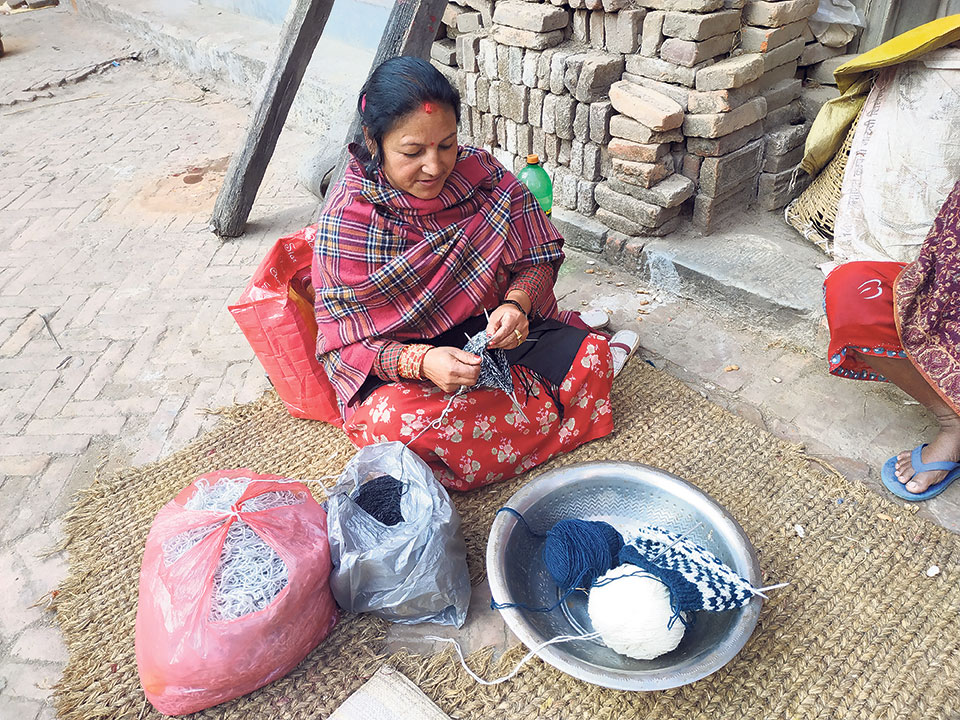Cham: The Dance Meditation (With Video)
5 years ago

5 years ago

5 years ago

5 years ago

5 years ago

5 years ago

BHAKTAPUR, Dec 13: When the cozy sun shines over the Taulachhey tole, Bhaktapur in an approaching winter, a community of women gathers to carry out their daily knitting. With every finger spinning magic with the colorful yarns, they enclose a fragment of their culture in every making. For 62-year-old Nhuchhey Lachhimi, knitting has become a part of her daily living and a medium to escape boredom.
With the changing seasons, she shifts her work from knitting to working in the fields, rearing chickens and running her shop. “I generally knit under the bright, warm sun while my daughter joins me at times. My daughters were intrigued as they saw me knitting and easily picked up the work. Earning enough is however a challenge. So it is important to seek multiple sources of income,” asserts Lachhimi.
Although it takes no time to learn the skills, a great deal of patience is required to master the art. Knitting with colorful yarns and making designs are challenging, as it is the next level to showcase your creativity. “We basically are required to make designs as per the order. But sometimes I enjoy drawing patterns on my own. The work gets less monotonous that way,” she adds.
52-year-old Gyan Devi Gainju, a local of Kamicha Galli, knits a pair of socks or gloves every day. “Meanwhile, I am working in gloves and sock. However, I hope to learn knitting caps as well. This practice has been a supporting business for most of the women in the area,” says Gainju. “It is convenient as we have to do the works in limited time assigned by the party who sell. They are sold within and outside the country. We gather in huge numbers at the courtyard;, especially during winters. We then work on colorful wears celebrating womanhood,” she adds.
Many areas tell a similar story of weaving, as it is one of the ancient and common ways to support their living. As per another local of the community, Bhawaneshwori Shama, a kg of ‘Tey’ (unrefined wool yarn) roll makes up to five pairs of socks or gloves or also around 10 pieces of caps. Knitting sweaters require two to three kgs of rolls depending on sizes and various designs. “The designed ones earn Rs 40-50 per pair while the simple ones fetch you up to Rs 80 per pair. These wears are then sold at prices ranging from Rs 250-350. We occasionally make handmade shoes as they are not in demand as compared to other wears,” she affirms.
In an extended space that witnesses an age-long history of women being on the forefronts, few men lending their hands in the community are overshadowed. 46-year-old, Sabina Napit is accompanied by her son-in-law Deberam Napit. “My daughter joins occasionally while my son-in-law is a good weaver. As per the work division of our society, we (Napits) are endowed with the duty to perform mourning rituals at the home of the deceased. However, knitting is a way to occupy the leisure hours after work. If one gets a good amount for utilizing spare time, why not do it?” asks Napit.
Despite its close proximity to the most populous city of the country, many areas of Bhaktapur are untouched by industrial trends and practices. While we may easily get machine woven products today, the handmade wears seem reasonable to be invested on. And while we may be questioning the gender roles and empowerment today, these women stand as exemplary figures to efficiently running homes, fields and shops.
“With every designed work, we carve the history and creativity in colorful yarns through the symbols that speak of our cultures in volumes from one generation to another. Confirming on the fact, Shama expresses, “I believe defining a monetary value to our works have played a significant role in empowering us, nurturing our skills and preserving this age-long culture of weaving generations.”



Leave A Comment